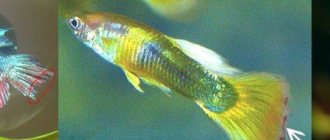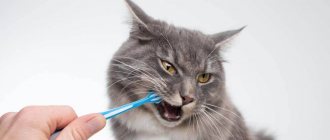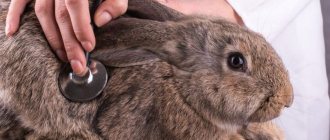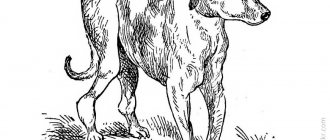Rabbits are very susceptible to various diseases, which can not only reduce the number of animals, but also deteriorate the quality of meat and fur products. Here is a list of possible diseases of rabbits, their main symptoms, as well as methods of treatment and prevention.
Guided by the information from this article, you will learn not only to recognize the main pathologies of these rodents, but also to carry out the correct treatment, and the preventive measures described in the article will help prevent illnesses in the livestock.
- Cell disinfection
Rabbit diseases
Rabbits can be affected by both contagious and non-contagious diseases. The first type poses a great danger, since in a short time a certain disease can cause the death of the entire livestock. That is why it is necessary to carefully monitor the condition of animals, feed and maintain them properly, and, if necessary, administer medications for treatment and prevention.
Non-contagious - characteristic symptoms
Often this group of diseases occurs due to violations of housing and feeding standards, injuries and hypothermia.
The most common non-contagious diseases in rabbits include (Figure 1):
- Feed poisoning due to feeding hay or green grass mixed with poisonous plants or when animals eat large amounts of table salt. Accompanied by diarrhea, loss of appetite, severe thirst and drooling. For treatment, a warm enema and milk are used, which should be given to drink instead of water.
- Rickets occurs when young animals are inadequately fed, when the body lacks vitamin D, phosphorus and calcium. The disease is accompanied by stunted growth, deformation of the limbs and spine. For prevention and treatment, more feed rich in vitamins and minerals (young green grass, sprouted grains, bone meal and vitamins) should be included in the diet of young animals.
- Catarrh of the stomach , intestines and flatulence also occur with improper feeding. There are three forms of catarrh (alkaline, acidic and catarrhal), in which the animals are depressed, have diarrhea, and feces stick to the fur on the back of the body. The form of catarrh can be determined by the nature of the stool. So, with sour catarrh, the feces are frequent, gray-brown and frequent. Alkaline is accompanied by rare acts of defecation, and the feces are dark, liquid and have an unpleasant putrefactive odor. To treat acidic catarrh, syntomycin and disulfan are used, and for the alkaline form, a solution of potassium permanganate is used. When catarrh occurs, the sick individual is not fed for 20 hours, and then only dietary food is given (oat decoction, grated carrots, acidophilus, high-quality hay).
- Flatulence is often accompanied by constipation, bloating and general lethargy. The mucous membranes of the nose and mouth may also turn blue. Sick animals should be given an ichthyol solution.
- Hypothermia can provoke bronchitis, pneumonia and non-infectious rhinitis in animals. These diseases can also be caused by increased levels of dust and ammonia in the air. Sick animals are transferred to a warm room and fed intensively. Only a veterinarian can prescribe the correct treatment.
- Sunstroke also quite often affects rabbits if they have been exposed to the sun for a long time on walks without shelters or in cramped cages without sufficient ventilation. At the initial stage, they become lethargic, refuse to feed, and constantly lie on their stomachs. Such animals are transferred to a cool room and a cold compress is placed on the head or watered with cold water. To prevent sunstroke, the roofs of the cages should be covered with straw or branches, whitewashed, and watered with water in the hot season.
- Frostbite of the ears occurs during the cold season when kept in uninsulated cages. At the first stage, frostbitten areas become red and swollen, then blisters with clear liquid appear inside, which die off at the last stage. For the first degree of frostbite, it is enough to transfer the animal to a warm place and rub camphor ointment into the frostbitten areas. At the second stage, the blisters are opened and also lubricated with ointment. At the third stage, the dead areas must be cut off, treated with iodine and a bandage applied.
- Very often, rabbits experience injuries, for example, when kept in faulty cages or when kept in groups, when the animals begin to fight among themselves. The health of individuals does not suffer from blows and bites, but the quality of the skin deteriorates significantly. In some cases, strong impacts can cause paralysis of the hind limbs. In this case, the animal must be sent for slaughter. In addition, rabbits are timid and can accidentally injure themselves. Therefore, you need to take care of them calmly, without making sudden movements or making loud sounds, and the cells should always be in good working order.
- If dirt gets into the eyes, conjunctivitis (catarrhal or purulent) may begin. The catarrhal form is accompanied by profuse lacrimation, redness of the eyelids, and hair begins to fall out on the cheeks. Purulent conjunctivitis causes the eyelids to stick together due to the discharge of pus, and the cornea of the eyes may become cloudy, which causes blindness. For treatment, eye rinsing with a solution of boric acid (catarrhal form) is used, and in case of a purulent form, rinsing is accompanied by the application of iodoform ointment to the eyelids.
Figure 1. Manifestation of non-contagious diseases: 1 - rickets, 2 - sunstroke, 3 - frostbite of the ears, 4 - conjunctivitis
Quite often, non-contagious diseases occur in females immediately after giving birth, so the owner needs to regularly examine the animals. From the video you will learn how to do it correctly.
Contagious
This group of rabbit diseases includes:
- Stomatitis of infectious origin
This is a viral disease that very often affects young animals, from 25 days to 3 months of age. Infection occurs from sick individuals to healthy ones. In the initial stages of infectious stomatitis, a coating forms on the tongue of the infected animal, which, depending on the degree of progression of the disease, can change color (from white to grayish-red). Also, quite large ulcers form on the tongue, and salivation occurs, which may intensify with further development of the disease. Infected individuals begin to scratch their faces with their paws, become lethargic and inactive, and very often huddle in the corner of the cage. The presence of the disease does not affect appetite, but due to existing wounds in the oral cavity, rabbits eat and drink very little, which leads to rapid exhaustion. The severity of the disease can manifest itself from mild to the most complex form. In case of a mild form, the young animals recover with the onset of 10-12 days of the disease, but in case of a severe form, they die during the first week. The main signs of infectious stomatitis are shown in Figure 2.
Note: However, drooling is very often observed in other diseases, since infectious stomatitis is characterized by other signs (diarrhea, depression, etc.) after the onset of drooling, but in other diseases these signs may manifest themselves differently. Distinctive signs of the disease are the characteristic appearance of the tongue and the presence of slurping sounds when chewing.
If sick individuals are detected, it is necessary to immediately isolate them and disinfect the cage and equipment. Animals that have suffered infectious stomatitis can only be used for commercial purposes. They should also not be allowed to mate with other individuals.
Figure 2. Symptoms of infectious stomatitis
After discovering a sick young animal in a cage, it is necessary to treat all the young animals that were in the same cage, and the sooner the better. They also improve the diet of the livestock and wash the mouth with a solution of potassium permanganate or copper sulfate. Sometimes white streptocide powder is poured into the oral cavity or penicillin is injected subcutaneously once.
Young animals without signs of disease are transplanted into other cages, streptocide powder is poured into the mouth, and the cages are disinfected.
- Infectious rhinitis
This is a very common disease that is caused by microbes that are constantly in the nose of animals (Figure 3).
Under normal conditions, microbes do not manifest themselves in any way, but if the nasal mucosa has been injured or inflamed, the microbes begin to multiply, provoking illness. An infected animal becomes a carrier of the disease, spreading pathogenic microflora when sneezing.
Signs of infectious rhinitis are:
- Constant sneezing;
- Animals rub their nose with their paws;
- Mucus and pus are discharged from the nostrils, and crusts form around the nose. Sometimes they even clog the nasal passages and the animal is forced to breathe through its nose;
- The nasal mucosa is swollen.
Figure 3. Signs of infectious rhinitis
It is worth noting that if the inflammation has spread only to the nasal cavity, the disease can become chronic, which does not affect the life of the individual. But if the inflammation affects other respiratory organs, the disease progresses quickly and the animal dies within one to two months. At the same time, his breathing becomes hoarse, his temperature rises, and signs of exhaustion appear, since the animals eat little and are reluctant to eat.
Note: Rabbits are also susceptible to non-contagious rhinitis, which occurs as a result of a cold or injury to the nasal mucosa. Infectious rhinitis can be distinguished from non-infectious rhinitis by the appearance of the secretion. If rhinitis is not contagious, serous or serous-mucous fluid will be released from the nose, and with infectious rhinitis it is purulent.
Sick individuals are immediately sent to slaughter, bedding and food are buried or burned, and the cage and equipment are disinfected. Only a mild form of infectious rhinitis can be treated using a solution of furatsilin.
- Pasteurellosis
It is an infectious disease caused by pasteurella. It is worth noting that pasteurellosis can affect not only rabbits, but also other domestic animals and birds, and in some cases, humans. But among rabbits the disease spreads very quickly.
There are two forms of the disease: typical and atypical. In the typical form, microbes penetrate the circulatory and lymphatic systems, quickly spread throughout the body and cause the death of the animal. In this case, the individual’s temperature rises, breathing becomes rapid, and the animal refuses to eat. Sometimes symptoms are accompanied by diarrhea and serous nasal discharge.
The atypical form of pasteurellosis is characterized by a longer and weaker course. It is characterized by the formation of one or several subcutaneous abscesses, which spontaneously burst after a few months and gradually heal (Figure 4). In most cases, the atypical form of pasteurellosis is accompanied by a complete recovery of the animal.
Figure 4. Manifestations of pasteurellosis
If rabbits have been diagnosed with a typical form of pasteurellosis, they are sent for slaughter, and healthy individuals are administered oxytetracycline or biomycin as a preventive measure. All cages and equipment must be disinfected, and food and bedding are destroyed.
Carcasses and skins of sick individuals can be used for cooking or making products only after thorough heat treatment and disinfection.
- Listeriosis
An infectious disease caused by listeria bacteria. The disease affects birds and other mammals, and poses a serious danger to humans. Listeriosis often affects females during pregnancy. Infection occurs from rodents and sick individuals, and various insects can carry the bacteria.
Listeriosis can occur in hyperacute, acute and chronic forms. With the development of a hyperacute form, the pregnant female suddenly dies, and with an acute form, she is aborted in the second half of pregnancy. The acute form lasts up to 4 days, and the female often dies. A concomitant symptom, in addition to abortion, is paralysis of the hind legs.
The chronic form of listeriosis is not accompanied by abortion, but the fetuses die and begin to decompose in the womb. Often females die after two weeks or a month. Surviving individuals do not produce offspring in the future.
Note: Sometimes listeriosis occurs latently and is not accompanied by any symptoms. It can only be determined by palpating the abdomen, since in the latent form the embryos dissolve on their own. If calving does occur, the infected cubs die within a week.
Listeriosis can be diagnosed after the animal's death by detecting white nodules on the liver. Also, during the course of the disease, the spleen enlarges and softens, and its color becomes black and red.
There is no treatment for listeriosis, so all sick animals are sent to slaughter, cages and equipment are disinfected, and bedding and feed are burned.
- Myxomatosis
This disease only affects rabbits and hares. The causative agent is the myxoma virus, which spreads from sick individuals to healthy ones. Since myxomatosis spreads very quickly, when the first symptoms of the disease are detected, you need to isolate the sick individual and contact a veterinarian.
Note: Infection occurs from various parasitic insects (lice, mosquitoes, ticks), as well as from feeding contaminated feed or using infected equipment, or from an infected person.
Myxomatosis can develop in edematous and nodular form. If animals are affected by the edematous form of the disease, they first develop conjunctivitis, which is later joined by rhinitis, and tumors with mucous fluid inside appear on various parts of the body (head, hips, sides) (Figure 5).
It is this symptom that is characteristic of myxomatosis, which is often confused with wandering pyaemia. However, with the development of such a disease, the tumors are single and there is purulent fluid inside them.
Figure 5. Symptoms of myxoplasmosis
Individuals with the edematous form of myxomatosis develop a depressed mood, they lose their appetite, and gradually lose weight.
The body temperature rises, the mucous membranes turn blue, the ears begin to droop, and breathing becomes hoarse, the eyelids begin to stick together from serous-fibrous discharge. The disease lasts a maximum of a month, and most individuals die.
The nodular form is not accompanied by depression of the rabbit. But nodules form on the head, in the ears and on the eyelids, which can become necrotic or resolve on their own. The duration of the nodular form exceeds a month, and approximately half of the infected animals recover.
Since there is no cure for myxomatosis, all animals showing signs of the disease are sent to slaughter, and cages and equipment are disinfected twice. It is recommended to destroy manure, litter and cheap equipment.
- Staphylococcosis
The disease is caused by staphylococci, which affect animals regardless of age. And since the disease is dangerous for humans, it is necessary to closely monitor the health of the livestock and promptly carry out preventive and therapeutic measures. Infection occurs from sick animals, as well as from infected feed and bedding.
Note: Staphyloccosis can manifest itself in a variety of forms, depending on the nature of its course (wandering pyaemia, pododermatitis, mastitis, etc.). All of these diseases have similar symptoms, but some differences still stand out.
For example, with the development of septicopyemia, small pustules can be noticed on the body of the cubs from birth. If animals are affected by wandering pyaemia, large abscesses cover the sides and back, and mastitis is characterized by redness and hardening of the mammary glands. Pododermatitis is accompanied by the formation of ulcers and fistulas on the paws.
There is no effective treatment for staphylococcosis, so all animals with signs of the disease are sent for slaughter. Meat can be used for food only after thorough disinfection, but manure, bedding and contaminated feed must be burned or buried.
It is best to prevent staphylococcosis. To do this, animals must be carefully examined and all scratches, bites and small wounds disinfected.
- Pododermatitis
This is a very common disease, the origin of which has not yet been established. Pododermatitis often affects individuals with weak paw hair that have been kept on a mesh floor for a long time. Since pressure increases on the non-furred part of the paws, ulcers and abrasions form on the skin, metabolic processes are disrupted, and when infection penetrates through wounds, the animal develops staphylococcosis. In this case, ulcers and abscesses form on the animals’ paws, they practically cannot move, constantly lie down, gradually become exhausted and die (Figure 6).
Figure 6. Signs of pododermatitis
At the initial stage of the disease, before the formation of fistulas and ulcers, the affected areas of the skin can be lubricated with lead or zinc ointment. You can also apply bandages with these drugs. Sick individuals need to be fed intensively, but if a staphylococcal infection has occurred, treatment is not advisable. Animals are sent for slaughter, and their meat and skins can be sold.
To prevent pododermatitis, the cages should always be clean, and it is better to cover the mesh floor with a wooden one. Wooden floors should be regularly cleaned of dirt and manure and periodically whitened with lime. If rabbits are kept on slatted floors but still suffer from pododermatitis, the floor should be cleaned and whitewashed every week.
- Colibacillosis
This is a very common intestinal disease that is caused by E. coli. Normally, these microorganisms live in the intestines of most animals and people, and are also found in water, feed and soil contaminated with feces. Under certain conditions, microorganisms acquire pathogenic properties and can provoke undesirable consequences for the body.
Rabbits most often become infected by eating contaminated food, and if it is weakened or improperly maintained, the disease develops much faster. Sick individuals become apathetic, their motor activity decreases, they eat poorly or completely refuse food, which is why they quickly lose weight and die.
Very often, a symptom of colibacillosis is diarrhea, so laboratory analysis is necessary to accurately diagnose the disease. Sick animals are isolated, their cages are disinfected, and the animals are not fed for 12 hours, after which they are given easily digestible food with levomycetin or biomycin.
- Coccidiosis
It is a disease that only affects rabbits. The disease is provoked by coccids of various types, which can develop in a wide variety of organs (liver, intestines, bile ducts, etc.). This disease is considered the most common, and infection of healthy individuals from patients occurs within five days.
Note: If coccidiosis develops in a mild form, the health of the herd is not affected, but if the animals are kept in poor hygienic conditions and malnourished, the disease may worsen.
If animals have been affected by a severe form of coccidiosis, they refuse food, constantly drink water, bloating appears and signs of general exhaustion appear. The hair becomes dull and tousled. When the disease worsens, convulsions begin and death occurs within two weeks. However, if coccids have affected only the liver, the disease develops within several months, and animals rarely die.
The exact form of coccidiosis can only be determined by autopsy of dead or slaughtered individuals. The most effective drug for the treatment of coccidiosis is considered to be sulfadimethoxine, which is mixed with food and given for five days. However, only a veterinarian can advise the most effective treatment for a particular form of coccidiosis. For prevention, iodine tincture is given in the morning (including to lactating queens and young animals).
The carcasses and skins of killed rabbits can be used, but the intestines and liver must be destroyed, since it is in them that the pathogens of the disease are concentrated.
- Passalurosis
One of the most common diseases of rabbits, which is caused by pinworm worms. The disease primarily affects adults, ingesting worm eggs along with food or water. Infected animals begin to rub their butts against the floor and walls of the cage, as the proliferation of pinworms provokes severe itching in the anus. Scratch marks appear on it, and the stool becomes thick. You can also notice mucus impurities in it.
For treatment, the livestock is not given food for 24 hours, and then they are fed boiled potatoes with the addition of drugs (piperazine adipate, piperazine phosphate). Passalurosis is treated quite quickly and most infected individuals completely get rid of the parasites.
It is worth noting that the life expectancy of parasites is not very long, and if conditions are created on the farm that make re-infection impossible, cases of self-healing may be recorded.
- Ringworm
It is provoked by trichophyton fungi. This is a very common disease, and sick rabbits pose a danger to humans. A characteristic feature of ringworm are round bald spots. The hair on the affected areas is broken at the roots, and the area itself is covered with a crust without bleeding areas. Ringworm often affects the hair near the eyes, legs and neck, and can easily become chronic, lasting more than a year (Figure 7).
Note: When the first signs of ringworm are detected, sick individuals must be isolated, and if most of the hair has been affected, they must be sent for slaughter. Disinfection measures are carried out, and food and bedding are burned or buried deep in the ground.
Mild forms of ringworm are quite treatable. To do this, you need to remove the crusts and cut off the hair from the affected areas, and immediately burn them. The affected skin is lubricated with iodine or petroleum jelly. Treatment is repeated after a few days.
Figure 7. Rabbits affected by ringworm
After recovery, the rabbit must be transferred to a new clean cage, and all animals that have been in contact with the infected person are given antibacterial drugs for prevention.
- Cysticercosis
Rabbits can become infected with this disease from dogs or other carnivores, which are carriers of this type of worm. Rodents are intermediate hosts of helminths, in whose bodies they develop from eggs into larvae and can be localized in a wide variety of organs.
It is difficult to diagnose cysticercosis because it does not manifest itself with characteristic signs. The only symptom is a depressed state, but it is also characteristic of other diseases. If parasites multiply en masse in the body, the animal may die. This is especially true for young animals up to three months old.
Since there is no effective treatment for the disease, appropriate preventive measures must be taken, first of all, limiting dogs’ access to rabbit cages.
- Pruritic scabies
Caused by small ticks. This is a fairly common disease in homestead farms. Thanks to the special physiology of mites, they move easily across the skin, causing severe itching. Infection occurs from sick individuals, as well as from an infected person. Young sucklings can become infected from their mothers.
Pruritic scabies can be diagnosed with a simple visual examination, during which crusts, scabs and bleeding cracks can be detected on the skin. Sick animals show severe anxiety, they have poor appetite, low weight, and if there is a strong spread of ticks, rabbits can even die.
For treatment, turpentine or birch tar is used, which is applied to the affected areas.
- Ear scabies
It is also quite common in homesteads, and is also provoked by mites that parasitize the inner surface of the ears, adjacent skin areas, and sometimes the skin of the front paws (Figure 8).
The disease is also quite easy to identify, since it is accompanied by the formation of crusts and scabs on the inner surface of the ears. In addition, sick animals begin to shake their heads, scratch their ears, or try to rub their ears on surrounding objects.
Figure 8. Symptoms of ear scabies
For treatment, oil-based anti-mite medications are injected into the auricle after preheating them. Next, the ears are massaged to remove mites. A mixture of turpentine and vegetable oil is also an effective remedy.
Diseases in winter
In winter, you need to be especially careful when keeping rabbits, since at this time of year animals are more susceptible to the diseases described above. But in winter, other diseases that are characteristic of the cold period of the year can also occur (Figure 9):
- Cold: the main symptoms are lethargy, runny nose and refusal to feed. The rabbit lies in a hunched position or stretched out on its side, its gaze becomes dull, and the animal practically does not react to external stimuli. The sick animal is isolated from the rest and kept in a warm room. He is fed intensively, and to combat a runny nose, a solution of furatsilin is instilled into his nose. With proper care, the cold goes away in about a week, and after another week it can be transplanted into a common cage.
- Frostbite: occurs when cages are not properly insulated. Most often, rabbits get frostbite on their paws and ears. In adults, the effects of frostbite can be eliminated quite quickly, but the cubs can even die. Frostbite comes in three stages. The most common is the first, in which the affected areas become red and painful, and the animal begins to scratch them intensively. At this stage, it is enough to move the animal to a warm room and lubricate the damaged parts of the body with fat. In the second stage, the skin becomes covered with small bubbles of liquid, and in the third, the damaged areas begin to wrinkle and die. The second and third stages can only be treated by a veterinarian.
- Heat stroke is also common in winter due to improperly heated cells. Typically, heat stroke occurs when a heater is installed near the animals and the rabbits are constantly exposed to warm air. Heat stroke is manifested by redness of the mucous membranes and apathy in the absence of a runny nose. The animal should be cooled slightly by wrapping it in a cool (but not cold) cloth.
Figure 9. Signs of colds and frostbite in the ears
To prevent rabbits from getting sick in winter, you need to properly insulate the cages. To do this, you should make the outer lining with insulating materials or keep the cages indoors.
You will find more information about animal diseases and their treatment in the video.
Invasive
Infectious diseases are very common in rabbit farming. At the same time, some can infect a person who comes into contact with a pet.
Scabies
The causative agent is a tick. Infection can occur from infected individuals or from a sick person. Scabies is diagnosed by visual examination, and bleeding wounds, scabs and crusts can be observed on the skin. Infected animals show anxiety, refuse food, and lose weight. Birch tar or turpentine is used as therapy; infected areas are treated with these agents.
Fascioliasis
A sick individual has swelling of the eyelids, increased heart rate, and elevated temperature. Yellowness appears on the mucous membranes of the mouth and eyes. The causative agent is the helminth Fasclola hepatica. To diagnose the parasite, a laboratory examination of stool is performed.
Cysticercosis
Dogs are carriers of the disease. It is difficult to determine the presence of cysticercosis, since it is not expressed by characteristic symptoms. The only sign is a depressed state, but it is also observed during other illnesses.
Since there is no effective treatment, it is necessary to take appropriate measures, for starters - limiting the contact of dogs with animal cells.
Invasive coccidiosis
The causative agent is coccidae of various species. If the severe form occurs, the pets refuse food, they are constantly thirsty, and bloating may appear. During exacerbation, convulsions and death occur within 2 weeks.
The form of the disease can only be determined after autopsy. The most effective treatment is sulfadimethoxine, which is mixed with food and given for 5 days.
Ear disease in rabbits
The ears are one of the most sensitive parts of a rabbit's body. In addition to frostbite, the ears can also be affected by other diseases that reduce the productivity of the animal and cause serious inconvenience to it.
- Psoroptosis (ear mites)
This ear disease is easily transmitted from one rabbit to another, since the mite can be found not only on the surface of the body, but also in feeders or drinkers.
Figure 10. Psoroptosis at various stages of the lesion
It is easy to determine the presence of psoroptosis by the characteristic symptoms (Figure 10). At first, rabbits become restless, begin to rub their heads against the cage and lose their appetite. Gradually, bubbles with liquid form at the site of mite infestation, which burst and cover the skin with a crust. If the disease is not treated in time, the symptoms may worsen, and it can lead to brain diseases, a general decrease in immunity and the death of the entire livestock.
- Purulent otitis media
This is a serious pathology that, if not treated in a timely manner, causes a chronic form of the disease, leading to brain damage and death of the animal.
Manifestations of purulent otitis include purulent discharge from the ears, anxiety when touching the ears and head in general, general lethargy and loss of appetite. In addition, the rabbit constantly shakes its head and scratches its ears. Since many of the symptoms of purulent otitis media and ear mite damage are the same, you need to consult a veterinarian for an accurate diagnosis.
If purulent otitis is confirmed, special anti-inflammatory drugs are instilled into the ears and the animal is transferred to an enhanced feeding regime.
Parasitic diseases
There are two types of parasites that can infect rabbits:
- Endoparasites include helminths and protozoa that penetrate organs.
- Ectoparasites include lice, fleas and ticks that parasitize the fur and subcutaneous layer.
Animals live with some of them until old age, infecting other individuals. They can be carriers all their lives, and it will not show up outwardly. These include coccidia, which cause coccidiosis.
Another protozoan organism is the spore-forming microsporidia Encephalitozoon cuniculi, which causes encephalozoonosis. In some cases it does not make itself felt, but in others it leads to deterioration of health, torticollis and death of the individual.
Worms in the body provoke nematodosis, passalurosis, trematodosis, cysticercosis, fascioliasis. They occur in individuals kept in pits and enclosures with an earthen floor. Transmitted through water, food, and through the skin.
The following drugs are used for therapy:
- Tibenzene for nematodes at the rate of 100-200 mg/kg once a day;
- Gamavit is administered subcutaneously for the first couple of days;
- Albendazole 2 times a day is taken independently or administered subcutaneously after Gamavit;
- Levomisole in the form of injections and powder for oral use;
- Hexachloroethane 0.2 g/kg is given three times every other day.
The most common external parasites include fleas, which live in the undercoat and become carriers of many serious diseases. Among their manifestations are redness of the bite sites, the presence of larvae and dark particles of insect excrement.
For treatment can be used:
- Neguvon and Bolfo shampoos for weekly washing;
- Advantage, Frontline are dripped onto the withers once every 2 months;
- solution of 0.5% Brommocyclene for bathing.
If treatment is started prematurely, more serious measures will not be necessary.
Eye diseases
The most common eye disease in rabbits is conjunctivitis, the symptoms of which were described above. However, animals can also develop other eye diseases, either of viral or infectious origin, or as a result of injuries.
Common eye diseases in rabbits include (Figure 11):
- Uveitis - can occur due to infection (both eyes are affected) or as a result of injury (only one eye is affected). Spots appear on the cornea, and the mucous membrane becomes dry. The animal's eyes constantly water, photophobia appears and the pupil narrows. Antibiotics are usually used for treatment.
- Exophthalmos is manifested by the fact that the eyeball begins to protrude forward and the animal cannot blink. As a rule, the provoking factor of the disease is a dental abscess located directly behind the eyeball. Unfortunately, there is no effective treatment, so the rabbit is either sent to slaughter or its eyeball is removed. For prevention, you need to carefully monitor the health of your animals’ teeth and treat them in a timely manner.
- A corneal ulcer appears after injury or chronic erosion. Despite the fact that this is a fairly rare disease, it causes serious consequences that require treatment. At the initial stage, inflammation of the cornea appears, then its tissues gradually die. The sick animal undergoes surgery to remove the film that has formed from the surface of the eye, and is also given antibiotics.
Figure 11. Main eye diseases: 1 - uveitis, 2 - exophthalmos, 3 - corneal ulcer.
Rabbits may also develop cataracts, which are provoked by various bacteria. Infection occurs in all age categories of animals, and for treatment it is necessary to identify the pathogen in order to prescribe the correct treatment.
After which meat is not suitable for food
In terms of its composition and benefits for humans, rabbit meat is ahead of many other types of meat . It contains a large number of useful elements and vitamins, and is also dietary and hypoallergenic. The meat of rabbits suffering from parasitic and infectious diseases (helminthiasis, fascioliasis, listeriosis, coccidiosis and others) should absolutely not be eaten. If the disease was caused by internal pathologies, injuries or a cold, then rabbit meat is completely safe.
Meat from rabbits that have suffered infectious diseases is not suitable for consumption.
Contrary to popular belief, rabbit meat that has recovered from myxomatosis can be eaten without harm to health. However, it is recommended to destroy a sick animal, since it poses a great danger to healthy individuals.
Rabbit hemorrhagic disease
Rabbit hemorrhagic disease is a viral disease that spreads rapidly and can cause the death of the entire population. The danger of the disease is that it does not manifest symptoms until it is too late to start treatment. After the virus enters the body, the rabbits continue to eat and develop normally, but at the final stage, blood begins to flow from the nose, they huddle in a corner and refuse to eat.
Note: The development of hemorrhagic disease occurs within several hours, so it is necessary to vaccinate all animals entering the farm.
Unfortunately, no effective treatment against hemorrhagic disease has been developed precisely because of the transience of the disease. The only method of control is to administer a special vaccine, which, even if the animal is infected, will help it survive the disease on its own.
Organization of quarantine on a rabbit farm
All new animals arriving from other places on the farm must be placed in a separate room from everyone else and quarantined for 21 days. If during this period of time no diseases have manifested themselves, then the animals can be moved to the others, but kept in different cages.
If sick animals are found, they are urgently removed from the rest. Also, all rabbits that were nearby and somehow came into contact with sick animals are also removed. They receive treatment and regular checkups.
Skin diseases
Rabbits shed several times a year. In order not to confuse this process with skin diseases, in which hair is also actively falling out, you need to carefully examine the animal. If hair loss is caused by shedding, new hair immediately grows in place of the old one. Skin diseases in rabbits not only provoke the formation of bald patches, but also the occurrence of additional symptoms: itching, redness or peeling.
Skin fungus (dermatomycosis) is transmitted not only from one animal to another, but also to humans. The animal develops itching and flaking, the skin turns red, and the hair falls out. For treatment, you need to remove hair from the affected areas and lubricate the skin with antifungal ointments. This must be done with gloves.
Skin diseases in rabbits also include ringworm and mites, which can also degrade the quality of the fur. Hair loss can be caused by common vitamin deficiencies and hormonal imbalances, so you need to carefully monitor the diet of the livestock.
Which ones are transmitted to humans?
Diseases found in rabbits can be transmitted to humans through contact with the animal or through consumption of contaminated meat. Typically, deadly diseases for rabbits harm people to a lesser extent, but in advanced forms they can lead to serious complications. The following diseases can be transmitted to humans:
- scabies;
- fascioliasis;
- cysticercosis;
- pasteurellosis (hemorrhagic septicemia);
- listeriosis;
- helminthiasis;
- tularemia.
Typically, a disease that is contagious to humans is caused by internal or external parasites. Infection can be avoided only by timely prevention of animals and high-quality processing of meat before consumption.
Prevention of diseases in rabbits
To prevent the development of diseases, rabbits must be kept in serviceable and clean cages, equipment and equipment must be periodically disinfected, and the animals must be properly fed.
To disinfect metal equipment, it is better to use a blowtorch, and small items can be kept in boiling water or lye for 15 minutes. Wooden equipment can be periodically scalded with boiling water, hot lye, or treated with disinfectant solutions (Lysol, creolin).
All new individuals purchased from other farms must be quarantined for a month.
Proper disease prevention is the key to rabbit health. From the video you will learn how to properly care for animals, protect them from poisoning, frostbite and sunstroke, as well as how to properly carry out other preventive measures.
Cell disinfection
Keeping rabbits in clean, disinfected cages is important in preventing disease. Since it is in the cells that they spend most of their time, pathogens can be inside the structure and cause re-infection.
Cell disinfection can be carried out in several ways (Figure 12):
- Firing with a blowtorch or gas torch. This is the simplest and most effective method of disinfection, since the causative agents of almost all diseases die under the influence of high temperatures. Even wooden cages can be disinfected by firing until the wood acquires a light brown tint (just a few minutes are enough for this).
- Chemical means : in household plots you can use any substances that can destroy pathogens. Often a solution of bleach or ash liquor is used for these purposes. You can also use a spray of formaldehyde solution.
Figure 12. Methods for disinfecting cages
For prevention, cages are disinfected once a year and after each replenishment of the herd with new individuals. The procedure is carried out before placing the rabbits in the cage. It is also necessary to carry out treatment after detection of the disease in rabbits. Even if all animals have received treatment or preventative medications, the cells must in any case be treated with disinfectant solutions.
Treatment
Rabbit diseases are treated depending on their form. If they have diseases of a non-contagious type, then the individuals are starved for about 12-20 hours. Then I gradually begin to introduce soft feed mixtures and mixed feed with steamed potatoes into the diet.
How to treat constipation? In this case, the following procedures are carried out:
- rabbits are given 1 teaspoon of castor oil;
- the abdomen is rubbed using a saline solution (1 teaspoon of table salt per ½ cup);
- an enema is done with a weak soap solution;
- carrying out daily jogging.
When infectious diseases appear, drug treatment is carried out. In these cases, antibiotics, anti-inflammatory, antiviral drugs and immunomodulators are given. It is also necessary to disinfect cells and equipment.
In general, treatment methods depend on the symptoms of the disease. But it is necessary to treat baby rabbits only after a full examination by a veterinarian.
conclusions
- Rabbits are susceptible to a number of diseases of various natures. Most often these are diseases of the ears, eyes, gastrointestinal tract and skin.
- Ears are susceptible not only to infectious pathologies, but also to frostbite.
- The anatomy and physiology of the animal directly influence the course of the disease and the characteristics of infection.
- Some parasitic and viral diseases are transmitted to humans through direct contact with a rabbit or through consumption of meat.
- Rabbits of medium size and early maturing breeds have increased resistance to diseases and better immunity.











